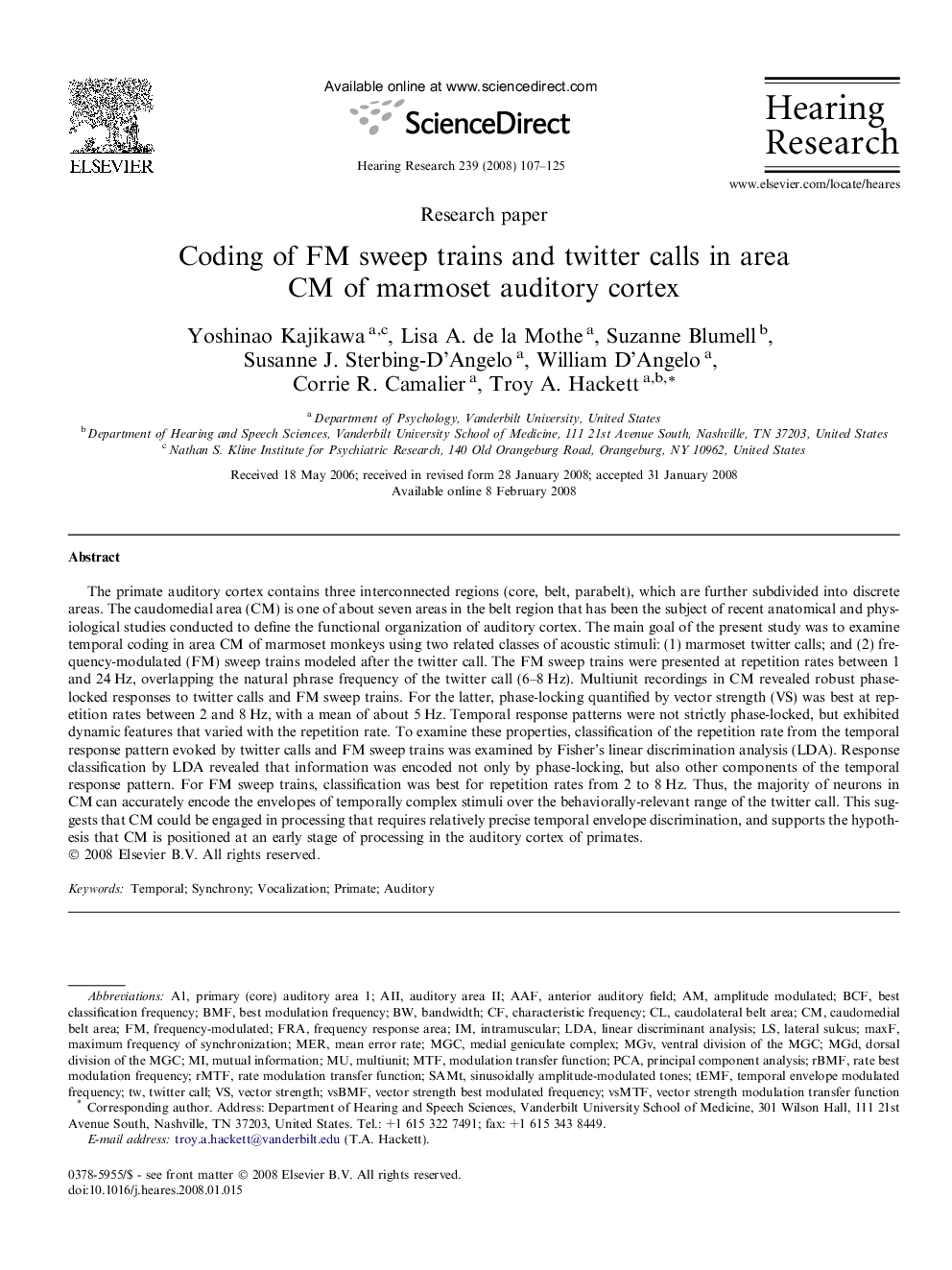| Article ID | Journal | Published Year | Pages | File Type |
|---|---|---|---|---|
| 4356094 | Hearing Research | 2008 | 19 Pages |
Abstract
The primate auditory cortex contains three interconnected regions (core, belt, parabelt), which are further subdivided into discrete areas. The caudomedial area (CM) is one of about seven areas in the belt region that has been the subject of recent anatomical and physiological studies conducted to define the functional organization of auditory cortex. The main goal of the present study was to examine temporal coding in area CM of marmoset monkeys using two related classes of acoustic stimuli: (1) marmoset twitter calls; and (2) frequency-modulated (FM) sweep trains modeled after the twitter call. The FM sweep trains were presented at repetition rates between 1 and 24Â Hz, overlapping the natural phrase frequency of the twitter call (6-8Â Hz). Multiunit recordings in CM revealed robust phase-locked responses to twitter calls and FM sweep trains. For the latter, phase-locking quantified by vector strength (VS) was best at repetition rates between 2 and 8Â Hz, with a mean of about 5Â Hz. Temporal response patterns were not strictly phase-locked, but exhibited dynamic features that varied with the repetition rate. To examine these properties, classification of the repetition rate from the temporal response pattern evoked by twitter calls and FM sweep trains was examined by Fisher's linear discrimination analysis (LDA). Response classification by LDA revealed that information was encoded not only by phase-locking, but also other components of the temporal response pattern. For FM sweep trains, classification was best for repetition rates from 2 to 8Â Hz. Thus, the majority of neurons in CM can accurately encode the envelopes of temporally complex stimuli over the behaviorally-relevant range of the twitter call. This suggests that CM could be engaged in processing that requires relatively precise temporal envelope discrimination, and supports the hypothesis that CM is positioned at an early stage of processing in the auditory cortex of primates.
Keywords
best modulation frequencyMGVMtFAIIAAFBMFMGDBCFMultiunitfrequency-modulatedmGCPCAVocalizationFRAMutual informationMERmodulation transfer functionLinear discriminant analysisPrincipal component analysisLDAamplitude modulatedanterior auditory fieldlateral sulcusAuditoryIntramuscularCharacteristic Frequencyvector strengthmedial geniculate complexfrequency response areaTemporalPrimateSynchronySAMTBandwidth
Related Topics
Life Sciences
Neuroscience
Sensory Systems
Authors
Yoshinao Kajikawa, Lisa A. de la Mothe, Suzanne Blumell, Susanne J. Sterbing-D'Angelo, William D'Angelo, Corrie R. Camalier, Troy A. Hackett,
